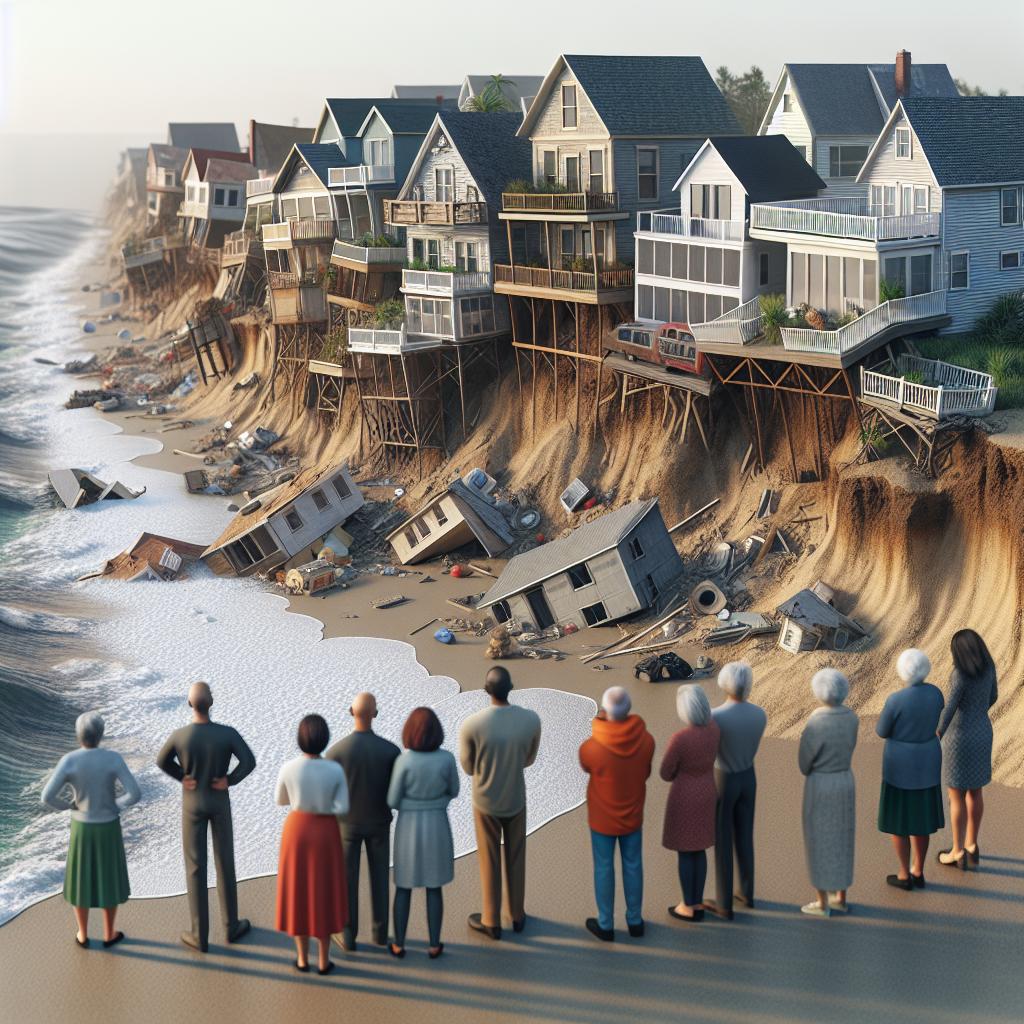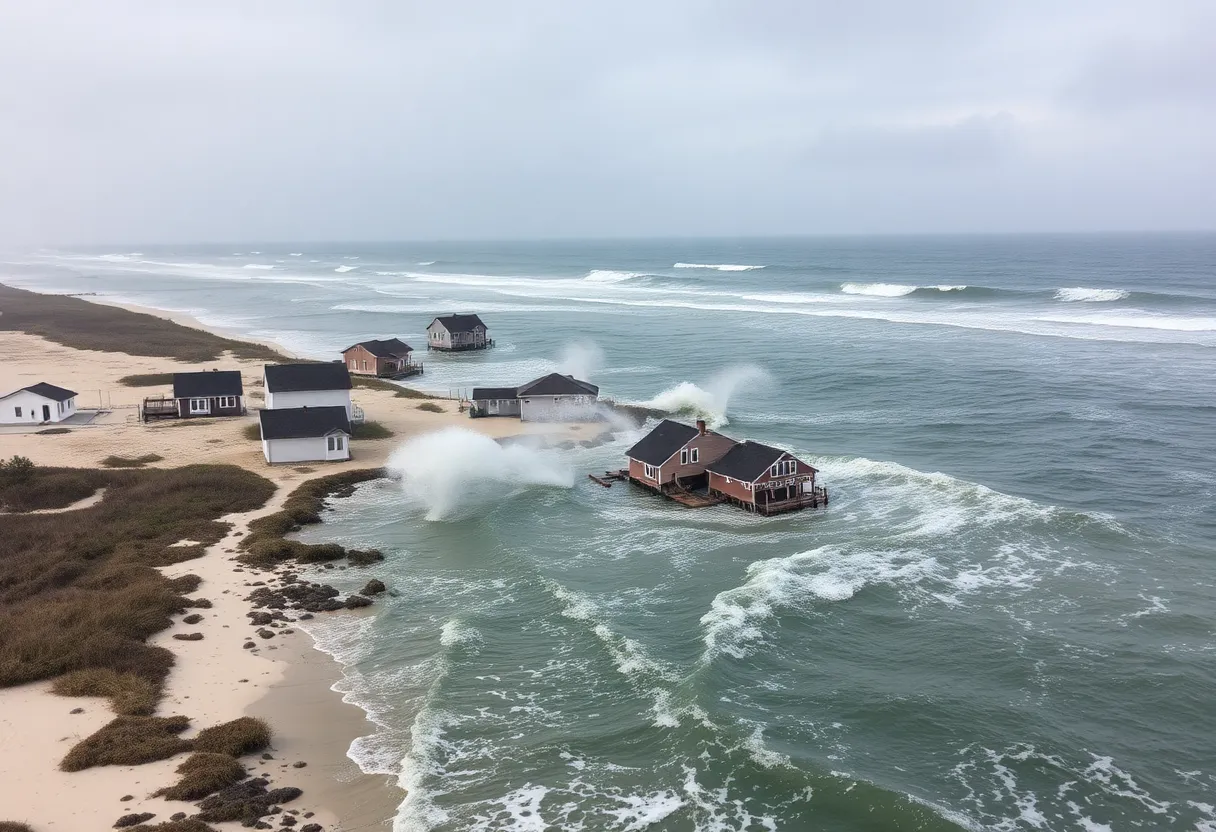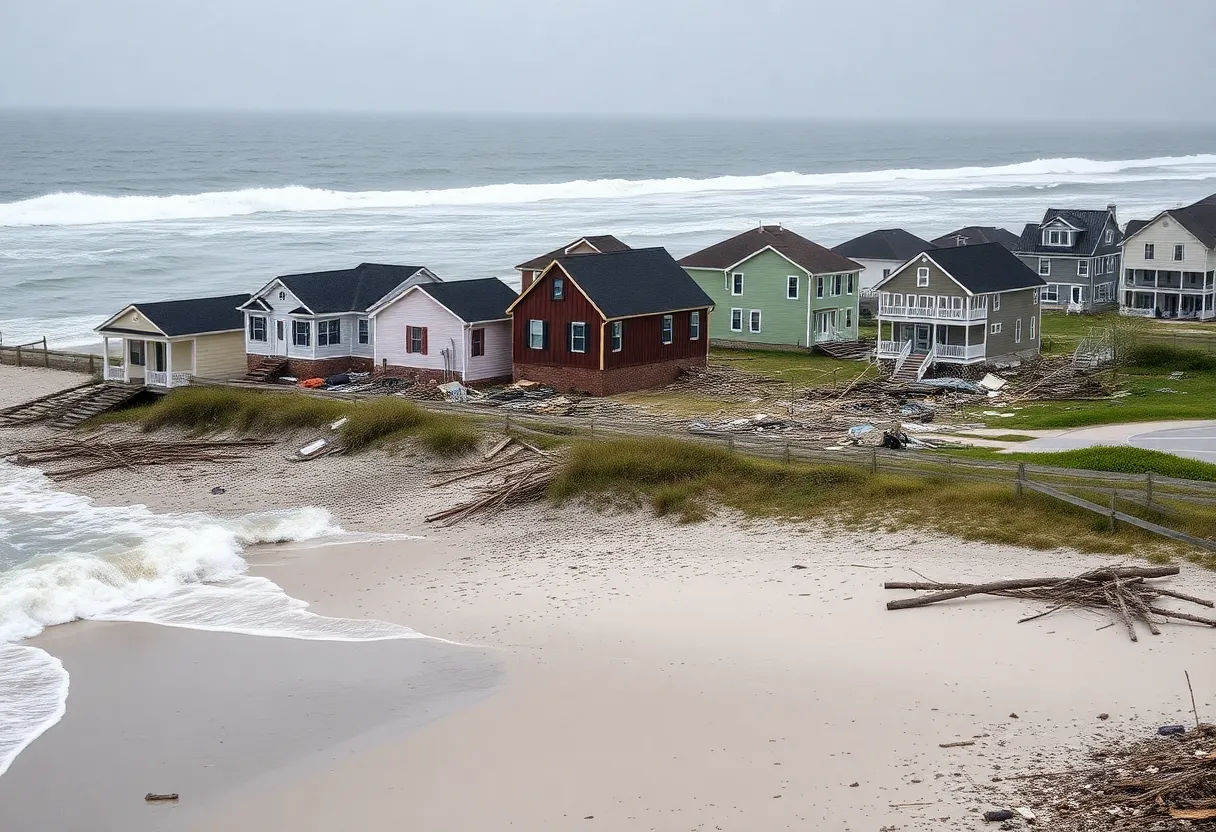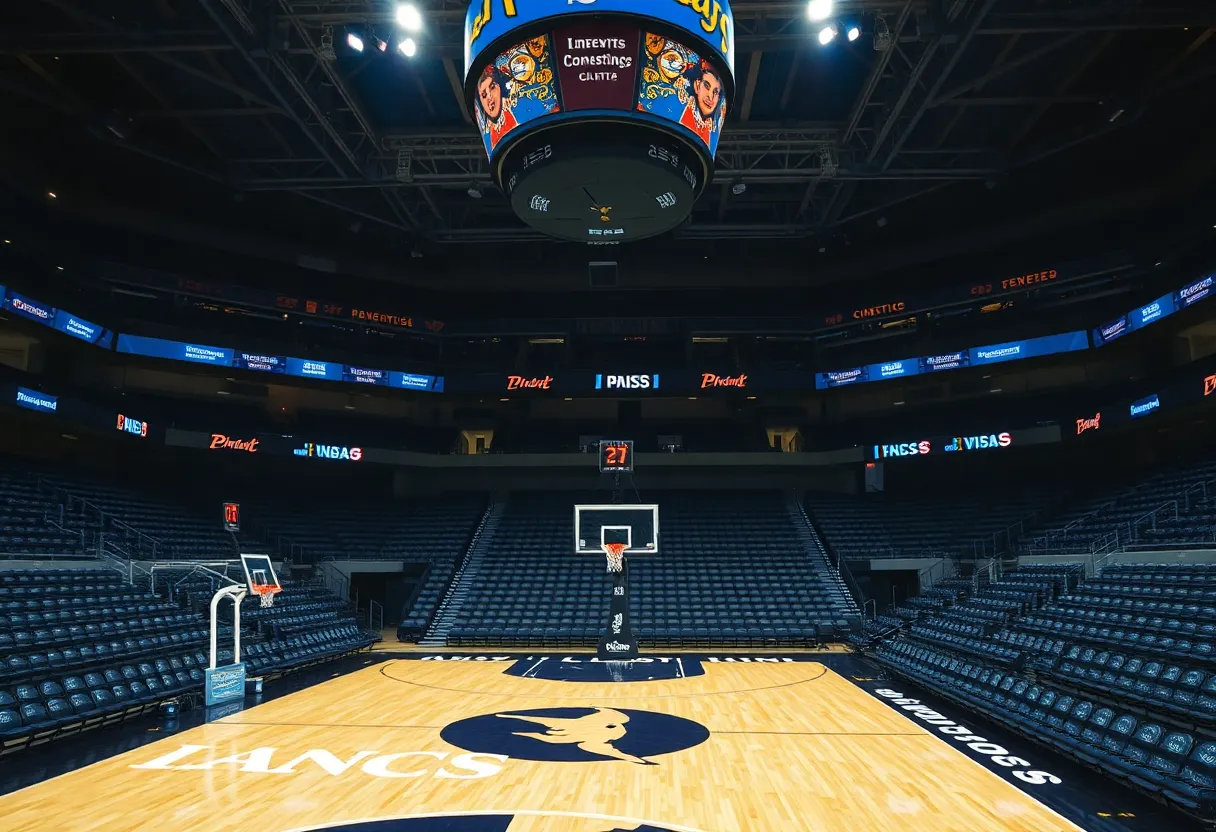Devastating Coastal Erosion in Rodanthe: A Community in Crisis
Rodanthe, North Carolina, is facing a distressing situation as a cluster of oceanfront homes teeters on the brink of collapse due to relentless beach erosion. Recent stunning drone footage reveals the dramatic impact of rising sea levels and extreme weather on the fragile landscape of the Outer Banks. This particular footage recorded on Friday highlights just how close some homes are to falling into the Atlantic Ocean.
Homes at Risk of Falling into the Sea
The aerial views capture a somber scene of vulnerability, with homes now dangerously close to the surf. Many of these properties once stood a solid 100 yards from the water’s edge, providing the perfect setting for beachside retreats. However, the landscapes have changed dramatically over the years. According to local resident Sharon Troy, her family has owned their home for 16 years, and the beach used to stretch far behind their house. “There was a football field of beach behind these houses,” she recalled. “Now, it’s just waves crashing at our front door.”
The Reality of Erosion and Insurance
Sharon spoke candidly about the frustration many homeowners face in such dire circumstances. “So many people say hateful things and ask why we built our house in the middle of the ocean,” she pointed out. “It wasn’t like this when we bought it.” The situation has become dire; with cracked septic tanks spilling sewage into the ocean, residents find themselves in a challenging predicament. “The insurance company won’t pay out until it falls over,” she explained, highlighting the struggle of those who are not wealthy but wish to preserve their homes.
A Sobering Trend
The uncomfortable truth is that this scene is not new for the Outer Banks. Over the past four years, seven houses have already succumbed to the ocean’s increasing appetite. It’s a widespread issue that has Dare County Manager Bobby Outten concerned. He noted, “Eventually, when the ocean erodes enough of the beach, then it takes the foundation out from under the house.” It’s a heartbreaking truth for families who once saw their homes as a haven.
Community Response and Cleanup Efforts
Local contractors like Mark Gray from WM Dunn Construction have already been called to clean up debris from numerous homes in the area. “When it’s rough like this, like when the last one went in, we had to clean 11 miles of beach,” he shared, expressing the extensive challenge these cleanups pose. With erosion continuing at alarming rates, Gray stated, “It’s changed the whole dynamics of this thing.” He added that they are bringing in more equipment to prepare for potential future collapses, a sign that the community must brace for further losses.
The Effects of Climate Change
Experts emphasize that climate change is worsening the erosion crisis along the Outer Banks. Cape Hatteras National Seashore Superintendent Dave Hallac remarked, “When you add a foot of water or 2 feet of water, that just makes everything worse.” As rising seas flood streets and overwhelm neighborhoods, residents are left grappling with a clear and present danger. With about 200 residents remaining in the area, the constant threat of rising tides looms larger with each passing day.
Hope Amid Uncertainty
Amid the chaos and destruction, Sharon Troy characterized the situation as “incredibly sad.” She and her fellow community members can only hope and pray for a solution as they watch their homes face off against the impending waves. The beauty of Rodanthe’s beaches, now threatened by nature’s wrath, serves as a poignant reminder of the fragility of life on the coast.
As this small community confronts the harsh realities of climate change and coastal erosion, it sparks conversations about preservation, safety, and the future of living by the sea. With each wave that crashes against their homes, the residents feel the urgency to act—before the ocean claims any more of their cherished properties.

Author: STAFF HERE OUTER BANKS WRITER
The OBX STAFF WRITER represents the experienced team at HEREOBX.com, your go-to source for actionable local news and information in the Outer Banks, Dare County, and beyond. Specializing in "news you can use," we cover essential topics like product reviews for personal and business needs, local business directories, politics, real estate trends, neighborhood insights, and state news affecting the area—with deep expertise drawn from years of dedicated reporting and strong community input, including local press releases and business updates. We deliver top reporting on high-value events such as the Outer Banks Seafood Festival, NC VIP Fishing Tournament, and NCBBA Red Drum Tournament. Our coverage extends to key organizations like the Outer Banks Chamber of Commerce and Outer Banks Community Foundation, plus leading businesses in tourism, retail, and hospitality that power the local economy such as Kitty Hawk Kites, Outer Banks Mall, and Avon Fishing Pier. As part of the broader HERE network, including HEREAsheville.com, HERECharlotte.com, HEREGreensboro.com, and HERERaleigh.com, we provide comprehensive, credible insights into North Carolina's dynamic landscape.





